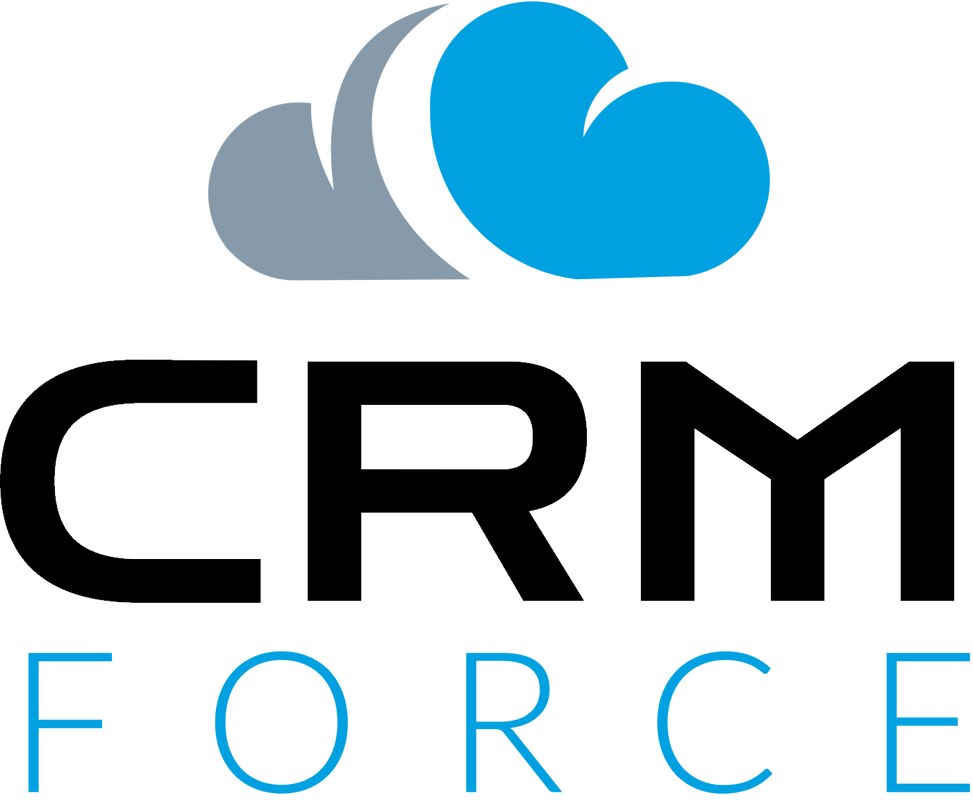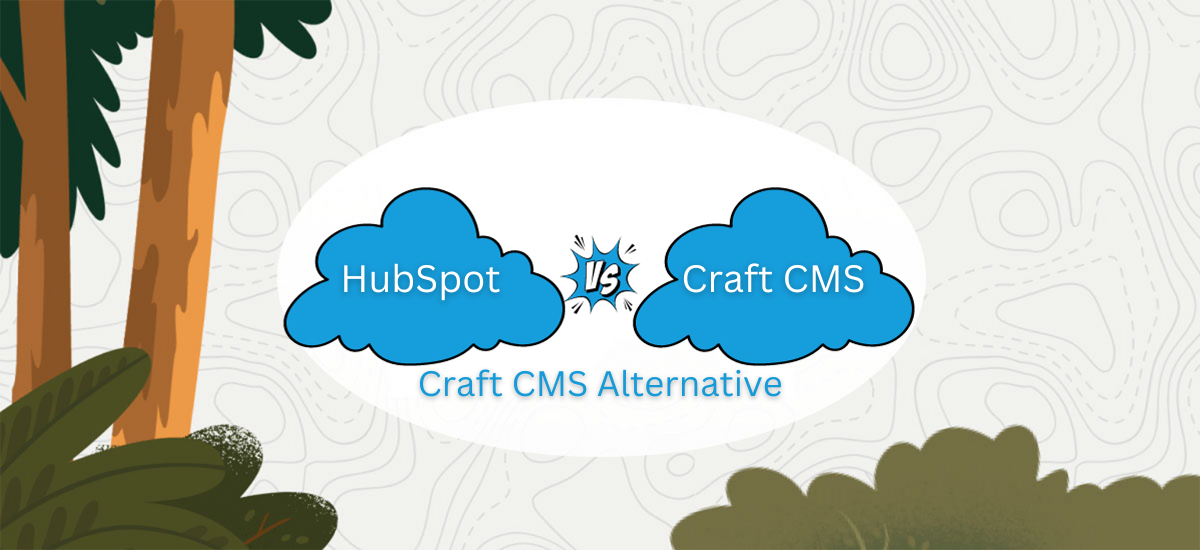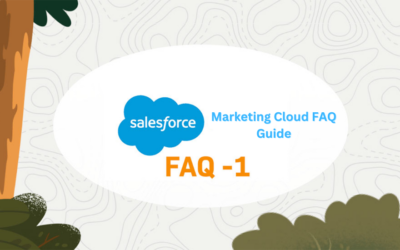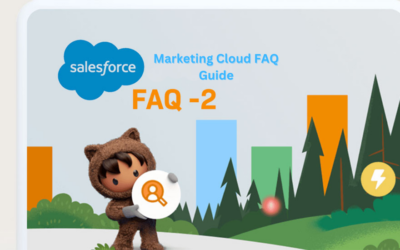In today’s digital landscape, where a strong online presence is fundamental for businesses of all sizes, the choice of a Content Management System (CMS) plays a pivotal role. Two prominent CMS platforms, HubSpot and Craft CMS, offer distinct features and capabilities tailored to different needs and requirements. This comprehensive guide seeks to provide a comprehensive analysis of HubSpot and Craft CMS, helping you make an informed decision about which CMS aligns best with your business goals. Furthermore, we’ll explore a variety of alternative CMS options to Craft CMS for those seeking a platform that might better suit their specific project requirements.
As businesses and individuals continue to seek the most effective means to create, manage, and publish digital content, it is essential to understand the strengths and weaknesses of each CMS. While HubSpot is celebrated for its user-friendly interface and robust marketing tools, Craft CMS offers unparalleled customization and flexibility, making it a preferred choice among developers and businesses with unique content structures. This guide aims to delve deep into the features, pros, and cons of each platform, ensuring that by the end of your reading, you’ll be well-equipped to make an educated choice about which CMS serves as the perfect foundation for your digital endeavors. If you need assistance with Salesforce CRM setup and optimization, companies like CRM Force can provide valuable expertise and support.
1- What is a Content Management System (CMS)?
A Content Management System (CMS) is a software application that simplifies the process of creating, managing, and publishing digital content. It allows users to build and maintain websites, blogs, e-commerce stores, and other online platforms without needing in-depth technical expertise. CMS platforms are essential for businesses and individuals looking to establish and maintain a strong online presence.
In essence, a CMS is like the backbone of your online content. It provides a user-friendly interface for managing content, such as text, images, videos, and more. This simplifies the process of creating and updating your website or digital platform, which is crucial for businesses looking to maintain a dynamic online presence.
2- An Overview of HubSpot
HubSpot is an all-in-one inbound marketing and sales platform that offers a content management system as part of its suite of tools. It’s known for its user-friendly interface and comprehensive marketing features.
2.1. Features of HubSpot
HubSpot offers a wide range of features:
Content Management: HubSpot’s CMS allows you to create and manage web pages, blog posts, and landing pages with ease. This includes a user-friendly, drag-and-drop editor.
SEO Tools: It provides built-in SEO optimization features, making it easier to rank higher on search engines. This means you can optimize your content for search engines right within the platform.
Marketing Automation: HubSpot offers robust marketing automation tools, helping businesses nurture leads and boost conversion rates. This includes tools for email marketing, lead scoring, and automated workflows.
Analytics: It provides detailed analytics and reporting to track website performance and marketing efforts. You can see how your content is performing and make data-driven decisions.
E-commerce Integration: While it’s not primarily an e-commerce platform, HubSpot can integrate with e-commerce solutions like Shopify, making it suitable for businesses with both content and online sales needs.
2.2. Pros and Cons of HubSpot
Pros:
User-friendly interface: HubSpot is known for its intuitive, user-friendly interface. You don’t need advanced technical skills to navigate and use it effectively.
Comprehensive marketing tools: It’s an all-in-one platform that offers not only content management but also a suite of marketing tools, from email marketing to lead generation.
Seamless integration with other HubSpot services: If you use other HubSpot services for marketing and sales, the CMS seamlessly integrates with them, streamlining your entire digital marketing strategy.
Excellent support and a large community: HubSpot offers robust customer support and a large user community, which is valuable for troubleshooting and learning from others.
Cons:
Pricing can be on the higher side: HubSpot’s services are known to be relatively expensive, which may not be feasible for small businesses or startups with tight budgets.
Limited e-commerce features compared to dedicated platforms: While it does integrate with e-commerce solutions, HubSpot is not primarily designed for e-commerce, so it may not offer the same depth of features as dedicated e-commerce platforms.
3- An Overview of Craft CMS
Craft CMS, on the other hand, is an open-source content management system known for its flexibility and customization options.
3.1. Features of Craft CMS
Craft CMS offers a range of features that cater to those who require extensive customization and control over their websites:
Highly Customizable: Craft CMS is incredibly flexible and allows for extensive customization of your website. This means you can create a website that precisely matches your brand’s unique needs and vision.
Content Modeling: It provides a robust content modeling system, enabling you to create content structures tailored to your needs. This feature allows you to define your content’s structure and relationships, which is crucial for businesses with complex or highly customized content requirements.
Security: Craft CMS is known for its strong security features and regular updates. This ensures your website is protected against common security threats.
Plugin Ecosystem: It offers a variety of plugins to extend functionality. While Craft CMS provides extensive customization, plugins can further enhance your website’s capabilities by adding specific features or integrations.
Developer-Friendly: Craft CMS is appreciated by developers for its clean and intuitive codebase. This is beneficial if you have a development team or are comfortable working with developers for your web projects.
3.2. Pros and Cons of Craft CMS
Pros:
Exceptional customization options: Craft CMS is ideal for businesses and organizations that require a highly customized website, as it offers extensive flexibility in terms of design and content structure.
Strong security features: Security is a top priority for Craft CMS, and it regularly releases updates to ensure that your website remains protected.
Developer-friendly: Developers find Craft CMS appealing because of its clean and well-documented codebase, which simplifies the process of customization and development.
Regular updates and a supportive community: Craft CMS benefits from a dedicated community of users and developers, which contributes to ongoing support and improvement of the platform.
Cons:
Not as user-friendly for non-technical users: Craft CMS’s flexibility and customization options come at the cost of user-friendliness. It may be challenging for those without technical expertise to navigate and make full use of the platform.
May require more development expertise: To unlock the full potential of Craft CMS, you may need to work with developers, which can add to the project’s cost.
4- HubSpot vs. Craft CMS: A Comparative Analysis
Now, let’s compare these two CMS platforms based on several key aspects.
4.1. Ease of Use
HubSpot is designed to be user-friendly, making it a great choice for users who don’t have extensive technical knowledge. Its drag-and-drop editor simplifies content creation. Craft CMS, on the other hand, caters more to developers and users with technical expertise. While it offers immense flexibility, it can be intimidating for those without coding skills.
HubSpot’s user-friendly interface is especially valuable for small businesses, marketing teams, and content creators who need to manage their websites without relying heavily on developers. It streamlines content creation and website management, allowing users to create and update content with ease. On the other hand, Craft CMS’s focus on flexibility and customization makes it an ideal choice for businesses that have specific, complex requirements and are willing to invest in developer resources.
4.2. Customization and Flexibility
If customization is a top priority for your website, Craft CMS is the winner. It allows you to create unique content structures and design elements. HubSpot, while flexible, has limitations when it comes to deep customization.
Craft CMS shines in this department because of its content modeling system, which allows you to design and structure content in a highly specific and tailored manner. This makes it suitable for businesses with unique content requirements, such as news publications or organizations with complex data structures.
On the other hand, HubSpot’s flexibility caters to businesses that need customization to a certain extent but are not looking to build entirely custom content structures from scratch. It provides templates and modules that can be customized, which is often sufficient for many businesses.
4.3. Content Creation and Management
Both platforms offer robust content management capabilities. HubSpot’s content management tools are more intuitive for beginners, while Craft CMS gives you complete control over content modeling.
HubSpot excels at simplifying content creation and management, which is particularly valuable for small businesses and marketing teams. Its drag-and-drop editor, along with the ability to schedule and automate content publication, streamlines the content management process. For those with little technical experience, HubSpot is an excellent choice for creating and managing content.
Craft CMS, on the other hand, provides advanced tools for content modeling. This is an advantage for businesses that require specific content structures and have the technical expertise to design and manage them. Craft CMS offers a high level of control over how content is organized and presented on your website, making it suitable for businesses with intricate content requirements.
4.4. SEO and Marketing Features
HubSpot excels in this area with built-in SEO tools, marketing automation, and analytics. It’s a solid choice if your primary goal is inbound marketing. Craft CMS, while capable, might require third-party integrations for comprehensive marketing features.
HubSpot is a leader in the inbound marketing space and provides a comprehensive suite of tools for businesses looking to enhance their online presence. It includes SEO optimization tools that help your content rank higher on search engines, marketing automation features for lead nurturing, and detailed analytics to measure the effectiveness of your marketing efforts.
Craft CMS, on the other hand, is primarily a content management system and may not offer the same depth of marketing and SEO features as HubSpot. While it provides the flexibility to integrate third-party tools and services, it may require additional customization and integration work to achieve the same level of marketing automation and analytics as HubSpot.
4.5. E-Commerce Capabilities
If you’re running an online store, HubSpot’s e-commerce features may be limited. Craft CMS can be integrated with e-commerce platforms to provide a more comprehensive solution.
HubSpot, while versatile, is not primarily an e-commerce platform. It can integrate with e-commerce solutions like Shopify, making it suitable for businesses with both content and online sales needs. However, if your main focus is e-commerce, you might find that HubSpot’s e-commerce capabilities are more limited compared to dedicated e-commerce platforms.
Craft CMS, on the other hand, can be integrated with various e-commerce solutions and provides the flexibility to tailor the e-commerce experience to your specific requirements. This makes it a solid choice for businesses with complex e-commerce needs and a desire for a high level of customization.
4.6. Pricing
Pricing varies significantly between the two. HubSpot tends to be more expensive, especially for advanced features, while Craft CMS offers more budget-friendly options, considering its open-source nature.
HubSpot is known for its premium pricing, which can be a significant factor for businesses with limited budgets. While it offers a range of features and tools, the cost of using HubSpot’s services may be prohibitive for startups and small businesses. The pricing model is typically based on usage and the number of contacts in your database.
Craft CMS, being open-source, provides more budget-friendly options, making it appealing to smaller businesses and organizations. Its pricing model is generally based on licenses, and there are no ongoing subscription costs for the core CMS. This makes Craft CMS an attractive option for businesses looking to manage their online content without incurring substantial ongoing expenses.
5- Use Cases: When to Choose HubSpot
HubSpot is an ideal choice when:
You need an all-in-one marketing solution: HubSpot offers a comprehensive suite of marketing tools that make it an excellent choice for businesses looking to streamline their marketing efforts.
You prioritize user-friendliness: HubSpot’s user-friendly interface is beneficial for businesses that want to manage their online content without extensive technical knowledge.
You have a marketing team but lack technical resources: If you have a marketing team but lack in-house technical expertise, HubSpot can be a valuable solution, as it simplifies content management and marketing tasks.
You’re willing to invest in a premium CMS: If your budget allows for it, and you’re seeking a premium CMS with advanced features, HubSpot is a strong contender.
6- Use Cases: When to Choose Craft CMS
Craft CMS is a better fit when:
You require extensive customization: If your business has specific, complex content requirements and demands a high degree of customization, Craft CMS is the right choice.
You have development expertise or access to developers: Craft CMS is ideal if you have in-house development expertise or access to skilled developers who can fully leverage its flexibility.
You need strong security and control over your website: Craft CMS’s focus on security and content control makes it a suitable choice for businesses with stringent security requirements.
You have budget constraints: Craft CMS offers more budget-friendly options due to its open-source nature, making it appealing for smaller businesses and organizations.
7- Alternatives to Craft CMS
If Craft CMS isn’t the right fit for your project, several alternative CMS platforms are worth considering. Let’s explore these alternatives in more detail:
7.1. WordPress
WordPress is a highly popular CMS known for its user-friendliness and extensive ecosystem of plugins and themes. It’s an excellent choice for bloggers, small businesses, and individuals looking to build websites with minimal technical expertise.
7.2. Drupal
Drupal is a highly customizable open-source CMS, suitable for complex projects and large enterprises. It offers extensive flexibility but may require more technical expertise for setup and customization.
7.3. Joomla
Joomla is a balanced CMS that strikes a middle ground between ease of use and customization. It’s a suitable choice for businesses and organizations looking for a well-rounded CMS platform.
7.4. Squarespace
Squarespace is known for its user-friendly platform and elegant templates. It’s a popular choice for individuals and small businesses looking to create visually appealing websites without coding knowledge.
7.5. Wix
Wix is a user-friendly platform that offers a simple, drag-and-drop website builder. It’s an excellent choice for beginners and those who want to quickly create and publish a website.
7.6. Sitecore
Sitecore is a robust CMS designed for enterprise-level websites. It offers advanced personalization and marketing capabilities, making it suitable for large organizations with complex digital marketing needs.
7.7. Contentful
Contentful is a headless CMS that offers extensive flexibility and content delivery through APIs. It’s a preferred choice for developers and businesses seeking a headless approach to content management.
Each of these alternatives has its strengths and weaknesses, so it’s essential to consider your specific requirements and goals when selecting the right CMS for your project.
Conclusion
In conclusion, the choice between HubSpot and Craft CMS depends on your specific needs and resources. HubSpot offers a user-friendly, all-in-one marketing platform, making it suitable for businesses with marketing and content management needs. On the other hand, Craft CMS provides exceptional flexibility and customization options, appealing to businesses with unique content requirements and developer resources.
It’s crucial to consider your project’s unique requirements, including budget, technical expertise, and content needs, when making a decision. And if neither HubSpot nor Craft CMS align with your goals, there are alternative CMS platforms available to meet various needs. Carefully evaluate the pros and cons of each platform and consider how well they match your project’s objectives before making a choice. Your CMS decision can significantly impact your online presence, so choose wisely to ensure your website or digital platform effectively serves your goals. To learn more about how CRM Force can assist you in recruiting top CRM talent and optimizing your CRM strategies for successful drip campaigns, contact us today. Together, let’s maximize your customer engagement Contact Us today.





